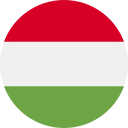Cambridge English: PET (B1 Előkészítő) - Állatok és állatrészek
Áttekintés
Villámkártyák
Betűzés
Kvíz

a subspecies of the gray wolf adapted to survive in the harsh Arctic regions of North America

arktikus farkas, fehér farkas
a tall animal with a very long neck and long legs that has brown spots on its yellow fur

zsiráf, zsiráf (főnév)
a large herbivorous reptilian of the lizard family with a dorsal crest, which lives in tropical areas of America

leguán, gyík leguán
a small mammal that is active at night, which is covered with spines and can roll itself while attacked

sündisznó, közönséges sündisznó
a large Australian animal with a long tail and two strong legs that moves by leaping, female of which can carry its babies in its stomach pocket which is called a pouch

kenguru, vallabi
a large ape with a red coat and long arms that lives in the rainforests of Southeast Asia, the male of which develops a throat pouch

orangután, erdei ember
a large black-and-white seabird that lives in the Antarctic, and can not fly but uses its wings for swimming

pingvin, antarktiszi madár
a large white bear which lives in the North Pole and is well-adapted to its icy environment

jegesmedve, sarki medve
a large and majestic deer species found in various habitats across Europe, Asia, and North Africa

vörös szarvas, nemes szarvas
a small mammal with a reddish-brown coat, tufted ears, and a long, bushy tail, known for its agility and arboreal lifestyle

vörös mókus, egy kis emlős vörösesbarna bundával
any of the pair of branched horns that grow annually on the head of an adult animal, typically a male one, from the deer family

agancs, szarvas agancs
the hard or pointed part of a bird's mouth

csőr, madárcsőr
a sharp and curved nail on the toe of an animal or a bird

karom, köröm
any of the light and soft parts covering the body of a bird

toll, pehely
the thick, soft hair that grows on the body of some animals such as cats, dogs, etc.

szőr, bundája
the horny and hard part at the end of a limb of a mammal, such as a horse

pata, láb
an animal's foot that typically has a combination of nails, claws, fur, and pads

mancs, láb
the part of the body of an animal, a bird or a fish that sticks out at the back, which can move

farok, állat farka
each of the curved pointy teeth of some animals such as elephants, boars, etc., especially one that stands out from the closed mouth

agyar, védőfog
any of the long, stiff hairs that grow on the face of a cat, mouse, etc.

bajusz, tapintószőr
a large aquatic bird with long legs and neck, pink plumage and a broad bill curved downward that lives near warm waters

flamingó, rózsaszín flamingó
a fast and large bird that is flightless and has long legs and a long neck, native to Africa

strucc, egy gyors és nagy madár
a bird with short legs and a wide beak that naturally lives near or on water or is kept by humans for its eggs, meat, or feathers

kacsa, lúd
a tropical bird with bright colors and a curved beak that can be trained to mimic human speech

papagáj, törpepapagáj
a large sea fish with a pointed fin on its back and very sharp teeth

cápa, vájhal
a flying insect that bites people and animals and feeds on their blood

szúnyog, moszkitó
a small green animal with smooth skin, long legs for jumping and no tail, that lives both in water and on land

béka, varangy
an animal that is like a horse but has shorter legs and longer ears, and is used for carrying things and riding

szamár, öszvér
a group that animals, plants, etc. of the same type which are capable of producing healthy offspring with each other are divided into

faj, fajok
all wild animals, considered as a whole, living in the natural environment

vadvilág, vadállatvilág
| Cambridge English: PET (B1 Előkészítő) |
|---|